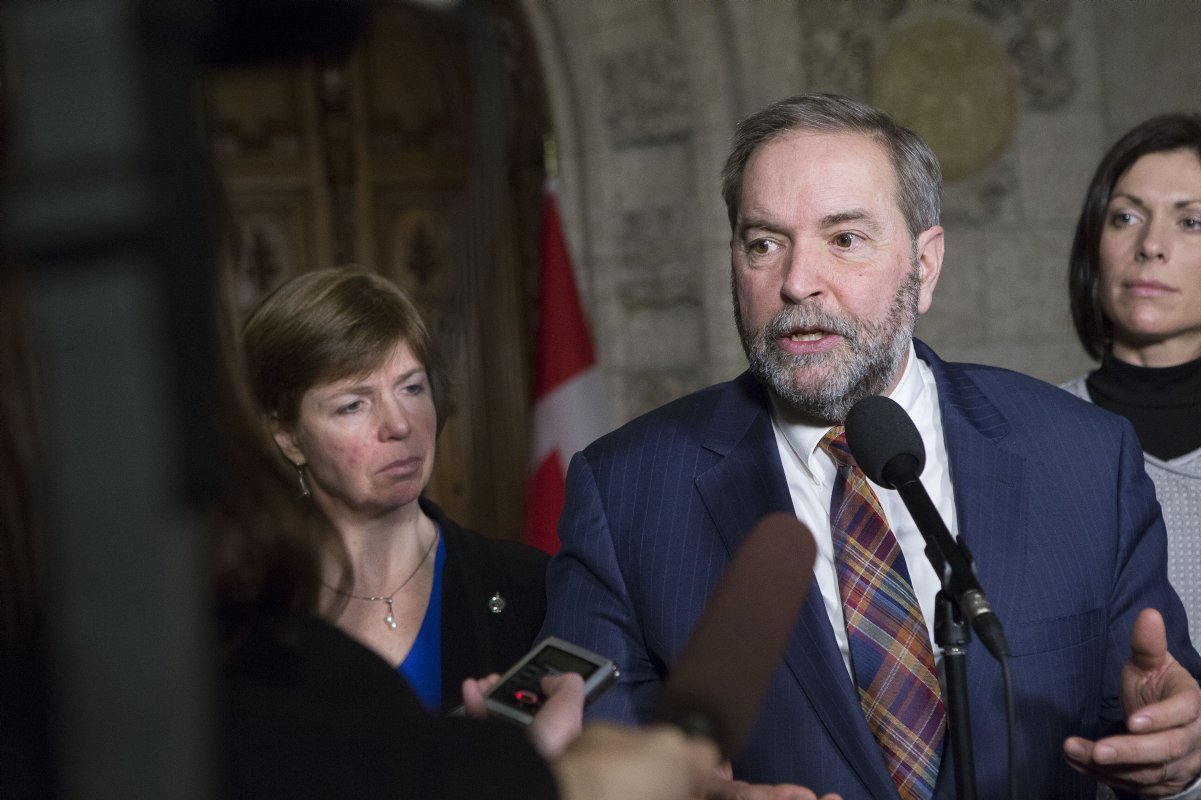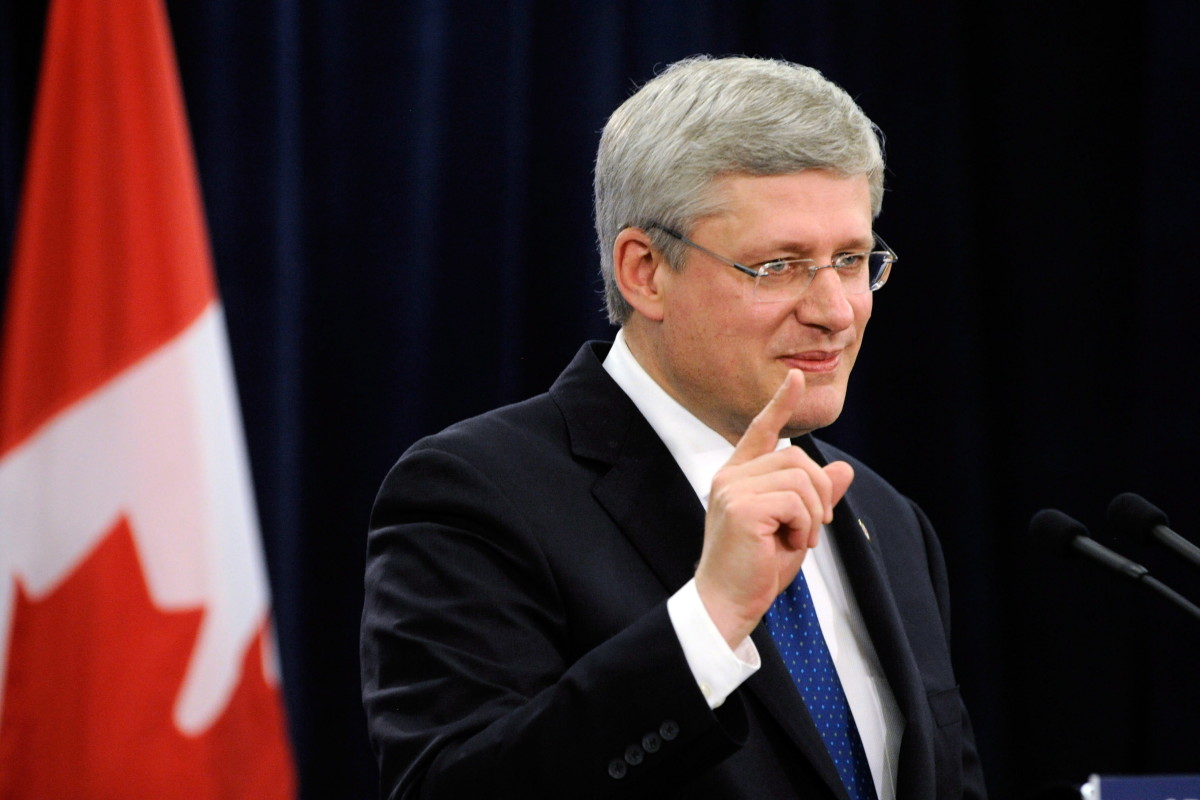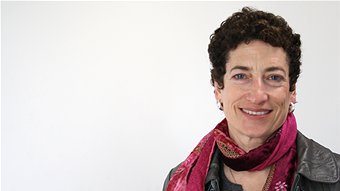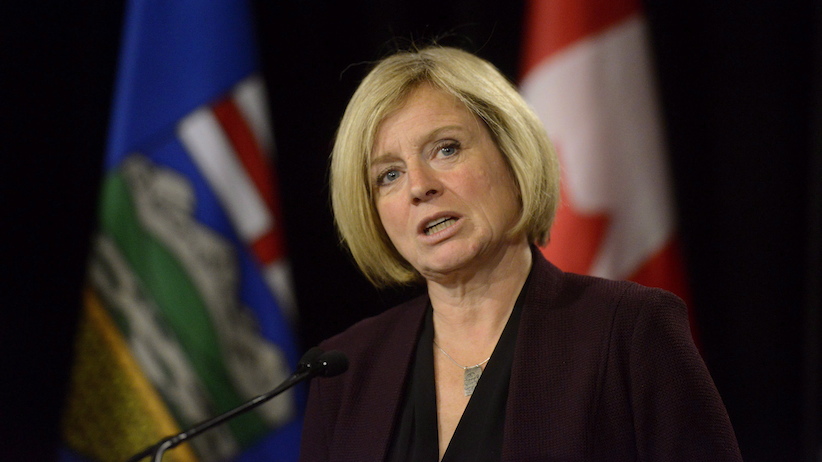
By Kady O’Malley, reposted from the Ottawa Citizen, Apr 8, 2015
Are you an orange-blooded New Democrat who, for whatever reason, just can’t make it to Edmonton for the convention this weekend?
Alternately, are you a political junkie aligned with a rival party (or none at all) who can’t tear their eyes away from the ongoing leadership crisis that may or may not be enveloping the increasingly embattled Tom Mulcair?
Or are you just one of those people who can’t resist a rock-em sock-em party policy plenary?
Whatever your motivation for tuning in, this highly unauthorized guide to the anticipated events this weekend should help you plan out your remote viewing schedule for #NDP2016.
Important Potential Timesaver: Are you a casual observer who honestly couldn’t care less about the eye-glazing policy debates and panel discussions that (rightly) take up most of the available time, but are keen to witness the moment of truth for embattled possibly-soon-to-be-former party leader Tom Mulcair? (Hey, no judgement.)
If so, you can safely skip everything until 10am MDT on Sunday, when Mulcair is scheduled to address the convention before delegates head to the ballot boxes to vote on whether or not to hold a leadership review, and tune back out until 12:20pm MDT, when the results will be announced.
For those of you who don’t want to miss a moment unless it’s likely to be a really, really boring one, here’s a complete guide to the NDP convention in Edmonton this weekend.
Where to watch: The Cable Public Affairs Channel (CPAC) is currently the only network promisinggavel-to-gavel coverage from the floor of the convention, although some sessions may be broadcast/streamed by other networks as well.
You can also monitor convention-related Twitter discussion under the #NDP2016 hashtag.
UPDATE: We are informed that some delegates will also be using #YEG2016, so you may want to keep an eye on both streams.
The complete set of policy resolutions – not all of which will make it to the main floor – can be found here.
Helpfully, the NDP has posted the full agenda for those of us forced to follow along from afar, which can be read here. Keep in mind that it uses local time (specifically, Mountain Daylight Time) so remember to perform the necessary conversions when putting together your viewing schedule.
Friday
Although the convention officially gets underway at 9 a.m., most of the morning activities will take place behind the firmly closed doors of the “resolution panels,” during which delegates will begin debating proposals submitted in the lead-up to the convention, which cover both policy areas and party practices.
Those panels – which are broken down by theme – will eventually compile the master list of “priority resolutions” that may be voted on during one of the plenary sessions scheduled to take place throughout the weekend, although as just one hour is allotted per session, it’s unlikely that every one will make it to the floor. (That’s what the “prioritization” is all about.)
In any case, the official opening ceremonies will begin at 1:30 p.m. – those include the formal call to order, as well as reports from various committees and other procedural business.
After that winds down, Canadian Labour Congress president Hassan Yussuff will take the stage for what’s likely to be a closely-watched appearance, given the searing critique of Mulcair’s leadershiphe offered in an interview with the Globe and Mail earlier this week.
Will he double-down on his criticism, or downplay his disappointment? Tune in at 2:15 p.m. to find out — and feel free to stick around for Ontario NDP Leader Andrea Horwath at 2:45 p.m., although as she’s highly unlikely to say anything surprising, this might be a good time for a snack break before the first policy debate, which will kick off at 3 p.m.
The hour-long session, which goes under the heading “Investing in a Canada Where No One Is Left Behind,” will cover a wide range of resolutions targeting social issues, including health care, indigenous rights and a guaranteed annual income, among other proposals.
After the clock runs out, the discussion will pause briefly for a 15 minute speech by UK MP Jon Ashworth, who currently serves as Shadow Minister Without Portfolio under Labour Leader Jeremy Corbyn, which may be the most existentially bleak title ever affixed to a parliamentarian.
At 4:15 p.m., delegates will shift their attention to resolutions related to “Strengthening [Human] Rights and the Canadian Identity,” which will likely include proposals to ensure full equality for people with disabilities, a call for an inquiry into murdered and missing indigenous women and increased support for Canadian artists and “cultural workers,” and as many other resolutions to make it through Friday’s panel session as can be dealt with before the time allowed for such debate expires.
After that, it’s off to dinner – and “regional caucus meetings” – with the final order of business the much-anticipated “Campaign Review” at 6:45 p.m.
Shortly after the conclusion of the official programme, Mulcair is slated to be the guest of honour at the River View Reception, a $300-per-ticket fundraiser.
Billed as both an “intimate evening” and an “exclusive event,” the entry fee will cover a full array of hors d’oeuvres, “delicious cocktails” and the chance to “mingle with Tom and other New Democrats, all while taking in the stunning views of the North Saskatchewan River.”
Saturday
As is tradition at most policy conventions, the second day is when the bulk of the real work gets done, and it looks like that’s definitely going to be the case in Edmonton.
Here’s a breakdown of the Day Two programme, including resolutions that currently seem likely to make it to the floor:
Policy debates (One hour per session)
8:30 a.m.: “Redefining Canada’s Place in the World” – Trans Pacific Partnership, nuclear disarmament, immigration policy, support for veterans, “peace between Israel and Palestine”
10:30 a.m.: “Governing in a Fair and Inclusive Canada” – electoral reform, indigenous rights and self governance, lowering the voting age to 16, better access to information and creating an “Ombudsperson General of Canada”
2 p.m.: “Party Affairs” – Proposed changes to the party constitution, including increased support for persons with disabilities, better support for Atlantic Canadian riding associations, improving the candidate vetting process and creating a “supporter category” for donors.
4:20 p.m.: “Innovating and Prospering in the New Energy Economy” – corporate tax rate increase, protection for supply management, rail safety, a West Coast tanker ban and restoring the Canadian Wheat Board.
Interspersed between the policy sessions are panel discussions on proportional representation, “building a local movement,” First Nations relations, as well as the suddenly very topical “Tax Havens: The Price We Pay,” featuring Harold Crooks, the man behind the titular film, as well as author Alain Deneault and Canadian Labour Congress representativeAngella MacEwan.
There will, of course, also be speeches, including a 1:30 p.m. address by Alberta Premier Rachel Notley. Earlier in the day, the convention will hear from human rights lawyer Julius Grey (9:30 a.m.), and former leader Stephen Lewis will close the day’s activities with a speech at 5:15 p.m.
Delegates will also hear from the three candidates running to replace Rebecca Blaikie as party president: former MP Elaine Michaud, Toronto school trustee and riding activist Marit Stiles and NDP socialist caucus chair Barry Weisledder.
As far as party-organized festivities, the only event listed for Saturday night is the Best of Alberta Social – $250 for another round of hors d’oeuvres, a “host bar” and “lively conversation with other visiting New Democrats” as well as New Democrat MPs. “This is a special opportunity to meet our caucus and chat with them one-on-one,” the invitation notes.
For those attending the convention on a more modest budget, there’s a city-hosted “POP-UP Show” that will admit delegates for free and promises “local musicians, s’mores kits and hot chocolate for everyone to enjoy.”
Sunday
As noted above, the much-anticipated/dreaded constitutionally-mandated post-election vote on whether to launch a leadership review will take place at 11 a.m., although the results won’t be revealed until 12:20 p.m. (assuming, that is, that the convention is running on time, which is never a particularly safe bet). The presidential vote will be conducted at the same time.
Before he sits back to await the verdict of the collective, Mulcair will get to make his case to the crowd at 10 a.m., and there’s also one final policy debate on the slate for Sunday: “Building a Clean and Sustainable Canada.”
That discussion, which will begin at 9:15 a.m., will almost certainly be dominated by the debate on whether the party should adopt the anti-fossil fuel/pro-renewable energy Leap Manifesto, in whole or in part, as official party policy, as has been proposed in resolutions submitted by dozens of riding associations from across the country.
Delegates will also get to discuss any emergency resolutions added to the agenda during the hour-long interlude to tally the votes.
According to the agenda, the gavel will go down for the last time at 12:30 p.m., although the schedule could change depending on the result of that leadership review vote.




